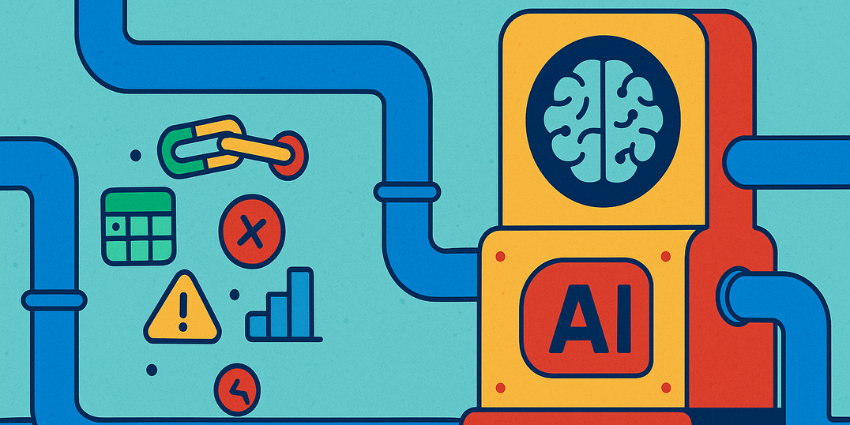Developing an excellent customer experience (CX) strategy is essential for any business seeking to thrive, or even just survive, in the modern world. Consumers and buyers have lower levels of brand loyalty and higher expectations than ever before, and the expect companies to deliver convenient, personalized, and innovative services 24/7.
Businesses need to access the right data to outshine the competition and both attract and retain customers. Customer data provides a comprehensive view of every aspect of the customer journey, as well as your target audience’s pain points and goals. Unfortunately, only around 15% of executives believe they have a truly unified view of their consumer data.
The good news is Customer Relationship Management (CRM) platforms, and their newer cousins, Customer Data Platforms (CDPs), can improve your access to crucial insights and elevate your CX strategy.
The question is, which solution is best suited to your business?
CRM vs CDP: What’s the Difference?
It’s easy to confuse CDP and CRM platforms as being two versions of the same solution. After all, both tools help to unify data and assist businesses in strengthening connections with customers. However, there are some major differences between these solutions.
A CRM system is a collective store of consumer data, case information, and activity history, often used by marketing and sales teams to drive business and increase revenue. It centralizes contact information and interactions, ensuring teams can access customer insights in a unified place.
A CDP, or Customer Data Platform, on the other hand, is a more advanced and comprehensive type of data management tool. A CDP works as a “data aggregation layer” in a business or other organization, sitting above the multiple existing systems of record, aligning and enriching information about customer journeys and conversations from across the entire IT estate.
A CDP provides a comprehensive solution for accessing customer insights that goes beyond the basics of a CRM system, particularly in a more complex organization operating multiple discrete systems of record (including sometimes several CRM systems) and offers access to unique features that break down silos: improving IT synergy, enhancing customer journey mapping and improving the experience of the service agent.
The Benefits of CDP over a CRM
The major difference between CRM and CDP solutions is that a CRM focuses on specific interactions between customers and your brand. Conversely, CDPs provide a big-picture view of all customer behavior wherever it occurs, synchronizing essential data, and empowering team members.
Martin Taylor, Co-Founder and Deputy CEO of Content Guru, comments: “Customer Data Platforms provide a transformative advantage over CRM tools by offering a unified, real-time view of customer data synthesized from many different integrated sources. Crucially, these sources stay in place, meaning that a CDP can quickly be implemented on top of a complex IT estate, without needing to change any of the ways in which people work. Through leveraging data-driven customer insights, organizations can offer a more bespoke level of personalization through seamless, omnichannel customer journeys. By harnessing the power of CDPs, businesses can drive engagement, increase conversions, and foster long-term consumer relationships. Ultimately knowledge is power and CDPs allow brands to gain a competitive edge in today’s data-driven marketplace.”
With a Customer Data Platform, companies can:
1. Enhance Employee Experiences
Excellent customer experiences start with fantastic employee experiences. Unfortunately, many contact centers struggle to keep their teams empowered and engaged. Around 49% of contact center leaders even reported an increase in employee attrition during 2022.
Improving the agent experience starts by providing employees with the tools, resources, and knowledge they need to be effective in their role. Customer Data Platforms go beyond the basic interaction tracking features of CRM, to offer true knowledge democratization.
A Customer Data Platform provides the insights required to power an intelligent routing strategy, helping to ensure customers are pushed to the right agent based on their history and need. A CDP also instantly provides each agent with the data they need to manage an interaction, in the form of a screen-pop, facilitating delivery of personalized service more rapidly and with minimum effort.
CDPs also empower agents to streamline workflows, allowing them to create new cases during calls, and they furthermore minimize post-call work via automated data updates.
2. Unify Customer Insights and Information
A CRM provides companies with a basic set of tools to record interactions, contact details, and other customer information in one place. However, a CDP expands beyond this functionality, aligning data from various different IT touchpoints. This reduces the complexity of an IT estate which can otherwise lead to inefficiencies and inaccurate reports.
A CDP solution pulls and stores real-time information from various third-party systems and communication channels, providing companies with a single point of truth and a single producer of data from which to build Artificial Intelligence (AI) models. It draws from existing systems of records to create a single easy-to-use environment, delivering true IT synergy.
Using APIs, CDPs eliminate the need for team members to jump between various platforms and applications to find different pieces of information about a customer journey. The right solution rapidly breaks down data silos, unifies communication apps, and aligns teams around shared knowledge.
3. Optimize Customer Journey Mapping
Studies show that personalized customer experiences can increase company revenue by 15%. Delivering a personalized, but consistent customer experience means understanding how to map the customer journey, and delivering meaningful interactions via all touchpoints.
A Customer Data Platform simplifies this process, with an omni-data record of customer interactions and information from across every channel of contact and other sources where appropriate. The connection between a CDP and wider CX functions provide businesses a 360-degree picture of their customers, along with valuable insights into contact handling data (first response time, average handling time, etc.), other behavioral data and customer satisfaction metrics.
A leading-edge CDP can also use AI-powered metrics to help analyze customer sentiment and gain deeper insights into the customer journey. These tools make it simpler for business leaders to create highly engaging customer journeys, built on the knowledge they collect about their segments.
4. Boost Opportunities for Growth
A centralized solution for customer data management provides companies with all the tools they need to power intelligent growth, whilst ensuring minimal disruption to the IT estate. With the right solutions, companies can leverage in-depth insights into their target audience, and make powerful decisions about how to improve the customer journey.
CDPs can also empower their teams with knowledge bases and data-driven reports, which reduces the need for constant refresher training, and simplifies coaching methods. A CDP solution can even highlight opportunities for new CX efforts. Using the data collected, companies can build powerful self-service solutions, intelligent conversational bots, and FAQs to guide every customer.
With a Customer Data Platform, business leaders can consistently improve their customer satisfaction scores, increase customer retention, and improve employee productivity and workforce efficiency. This essentially transforms the contact center from a “cost center” into a profit goldmine.
Taking CX to the Next Level with a Customer Data Platform
The CRM has for the past decade been recognized as the go-to tool for managing customer data and profiles. However, while CRM solutions can help companies track interactions, streamline workflows, and deliver personalized service, they are often limited in scope and flexibility.
Martin Taylor, Co-Founder and Deputy CEO of Content Guru, adds: “Unlike CRM tools, CDPs enable businesses to consolidate rich, complex, customer data, across channels; enabling a deeper understanding of behavior and preferences to better tailor engagement strategies. With CDPs, organizations can create highly personalized experiences, delivering the right message, to the right customer, at the right time, through the right channel of engagement.”
The ability of a CDP to aggregate data from different sources, write updates back to those sources, and empower teams with useful screen pops, routing tools, and knowledge bases has a much bigger impact on CX results. With a CDP solution, organizations can gain a wider understanding of how customers behave and pave the way for rapid, sustainable growth.







